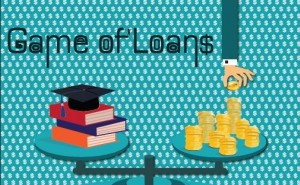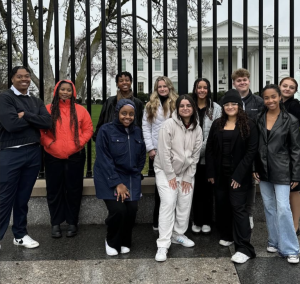What’s the deal with student debt? There are many questions regarding this component in student’s lives, from encountering tuition funding options for the first time as a first-generation student or attempting to fund an education while living on your own. From the class of May 2014, approximately 56 percent of the class borrowed student loans at some time over their college career at Rollins, and they left with an average debt of $26,689, in comparison to the national average of $33,000.
 Steve Booker, Interim Dean of Enrollment Management at Rollins College, mentions several misconceptions regarding financial aid. Many students believe that the Free Application for Federal Student Aid (FAFSA) is difficult to complete. He assures students that the Office of Financial Aid is there to assist with the task. Also, FAFSAs should be newly completed every school year. If household changes occur, it is important to contact the Financial Aid office to be sure students are receiving the most accurate amount of aid. Lastly, the most common misconception is that scholarships are few and far between. There are various scholarships a student can apply for, whether they are through Rollins or outside sources, that can help assist with the cost of tuition.
Steve Booker, Interim Dean of Enrollment Management at Rollins College, mentions several misconceptions regarding financial aid. Many students believe that the Free Application for Federal Student Aid (FAFSA) is difficult to complete. He assures students that the Office of Financial Aid is there to assist with the task. Also, FAFSAs should be newly completed every school year. If household changes occur, it is important to contact the Financial Aid office to be sure students are receiving the most accurate amount of aid. Lastly, the most common misconception is that scholarships are few and far between. There are various scholarships a student can apply for, whether they are through Rollins or outside sources, that can help assist with the cost of tuition.
Booker wants students to be educated about their scholarship and loan options.
“There are scholarship scams out there, and we want students to protect their information and not pay for scholarship services or applications as they do not work. In regards to loans, if you have to borrow student loans, do your homework and only borrow what you need,” said Booker. “Some students need loans to live on, but they might be able to cut back on some expenses that are really ‘wants,’ which would reduce the total amount of debt upon graduation. Student loans can be a good investment when used appropriately, but we are always concerned with the potential to over borrow.”
Another important thing to keep in mind is to not delay repaying student loans. Experts say a student should begin repaying their loans six months after graduation; many student loans offer this six month grace period. If a student is considering graduate school, undergraduate loans can be deferred as a request. Keep in mind interest can accrue while obtaining a graduate degree, increasing total debt.
Additionally, beginning in October 2015, the U.S. Department of Education is kick-starting a program allowing students to use their loans and grants for non-traditional education, such as internet courses or open online courses. These are considered experimental programs, and prior to this initiative only accredited schools were eligible to receive student loans and grants.
With the diverse kinds of studies at Rollins comes a diverse group of students. While it pertains to the ever-growing concern of financial aid, do certain kinds of students have more of an advantage over others? Booker claims that success belongs to a responsible student.
“Each student brings knowledge, ability, and fortitude with them and it’s those abilities that will impact their outcome more so than who is paying the tuition. There are a number of studies that show students who work part-time while enrolled in college (whether it’s through an internship, work study, or other types of work) have higher GPAs and higher graduation rates. These students learn to balance their time and prioritize their day in order to be successful,” said Booker.
For many first generation students, funding tuition is an entirely new experience. For Dilsia Fernandez ’14 ’17MA, Rollins College was able to point her in the direction of scholarships and aid.
“My advice for students to avoid financial aid debt is to get involved. I know it may sound silly, but you would be amazed by how many scholarships are out there that are not made public. You would only find these opportunities if you were involved in the community,” said Fernandez.
Fernandez was so inspired by her success within the work study experience that she applied to be a work study supervisor herself.
Alumni Sophie Paulette Jupillat ’15 is also a student who ventured down the work study path. In her junior year of college, she had a dependency override because of family issues and was then made eligible for work study. She utilized work study to help pay for the out of pocket tuition owed. She owes $30,000 in student loans, which she is now paying off.
“My advice to work study students is to work hard and diligently, work as many hours as you can, and make sure you work all the hours whatever department you are in provides,” Jupillat said. “Then, the usual common sense: don’t overspend, max out loans, and then find a steady job that will hopefully give an income high enough you can pay back loans bit by bit.”
Overall, the most important lesson learned is to ask questions and seek help to learn which options work best. Every student’s case is different, but in the quest for a top education solutions can always be found.







Be First to Comment